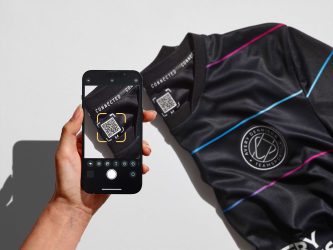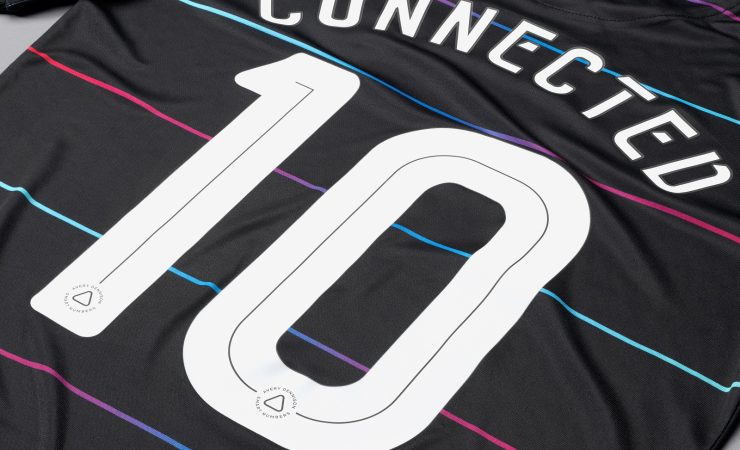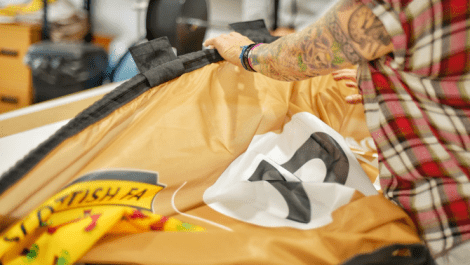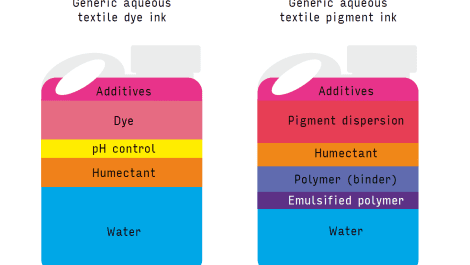In this article, Jeremy Bauer, general manager of Embelex, Avery Dennison, explains how digital printing and digital connections are diving the future of sportswear.
Innovations and expanding expertise across the printing industry have opened up new, exciting avenues for brands and suppliers to produce customised and personalised products at speed. The shifting industry is now venturing into an almost sci-fi realm, where consumers can scan digital triggers on labels and embellishments to access online content at the tap of a button.
This high-tech digital printing is allowing fashion brands and sports teams to engage with fans on a deeper level. For instance, in the fast-moving world of football, every Premier League shirt is now digitally-connected, meaning fans can use their mobile phones to scan ‘smart embellishments’ like shirt numbers and care label QR codes. Through these digital triggers, fans can access exclusive online experiences and be in with a chance of winning prizes, such as the Premier League’s Hall of Fame shirt, a competition that ran last season.

Jeremy Bauer, general manager of Embelex
As the supplier of the names, numbers and sleeve badges for all Premier League teams’ shirts, Avery Dennison’s Embelex division makes this possible. Our new technology fuses the electric atmosphere of the stadium with bespoke content that is available to loyal supporters beyond the arena to enhance their experiences, connecting them with millions of likeminded fans to celebrate their chosen team as a community.
In this article, I’d like to explore the capabilities of smart embellishments, the power of the technology that enables them and how this could impact the textile and print industries. I will also delve into what suppliers should be looking for in an embellishment provider to keep them one step ahead in today’s futuristic fashion realm.
What makes a smart embellishment?
State-of-the-art printing technology enables the production of digitalised embellishments, such as the numbers on the backs of football shirts, which can be scanned using smart devices. These are digitally-printed, laser cut graphics with embedded invisible triggers and QR codes on care labels that lead to online content.
This technology amplifies personalisation and customisation of printed apparel to engage with consumers like never before. People are no strangers to online experiences and a report by Cheetah Digital found that half of sports fans are happy to trade their data for incentives like coupons or exclusive access through digital interactions. The demand is real, the technology is available and the possibilities are endless.
The potential of digital triggers
The sports apparel market is expected to reach over $360 million by 2028, and these innovations in digitally-connected embellishments could transform the role garments play as the lines between the real-world and the online domain are blurred.
Thanks to advances in IoT, connected garments can act as portals to online web pages where brands can continue the customer journey long after the checkout. These benefits extend to both online and in-store retailers who can direct customers to web pages where they can advertise more products or offer promotions to reward customer loyalty.
Aside from commercial applications, digital triggers can also provide consumers with important product care advice. This can be everything from recycling advice to details on the composition of materials used. Digitising this information means removing it from lengthy care labels with hard-to-read fonts, saving materials and improving accessibility.
There are many applications for this technology, and the expansive world of football in which millions of custom and personalised shirts are printed annually is a brilliant space to explore its potential.

QR codes and smart phones are allowing fashion brands and sports teams to engage with fans on a deeper level
Digital printing of the future
Football kits are a unique form of apparel with the potential to be digitally printed at scale and on-demand with the best facilities. They can be made bespoke for one individual or in huge quantities as famous player kit replicas. Kit sales are a lucrative income source for football teams, and it all comes down to timing. Following sponsorship deals and the build-up to tournaments like the Premier League, shirt suppliers must be ready to produce kits at speed and scale.
Businesses need to work with embellishment providers who they can depend upon to deliver on demand. This means looking for manufacturers that have a wide array of global distribution centres and the latest technology to produce high-quality heat presses at scale and speed to ensure production is seamless. For context, Ronaldo’s return to Manchester United in 2021 generated £187 million in replica shirt sales, showing the scale of this industry. With a demand uptick like this, speed and agility are vital to maximise the opportunity.
The fashion industry is changing, and sports brands have adapted by extending consumer interactions beyond the physical world. There are more than 6 billion global smart phones users, presenting a huge market for digital interactions. In a world where loyalty is everything, digital triggers allow football fans to get one step closer to their idols on the pitch.
It’s exciting to think about what will come next for digital printing as the metaverse begins taking hold of the world around us. Digitally-connected garments could become valuable assets both in the physical and digital worlds, and high tech digital printing will be the backbone of this budding industry.





